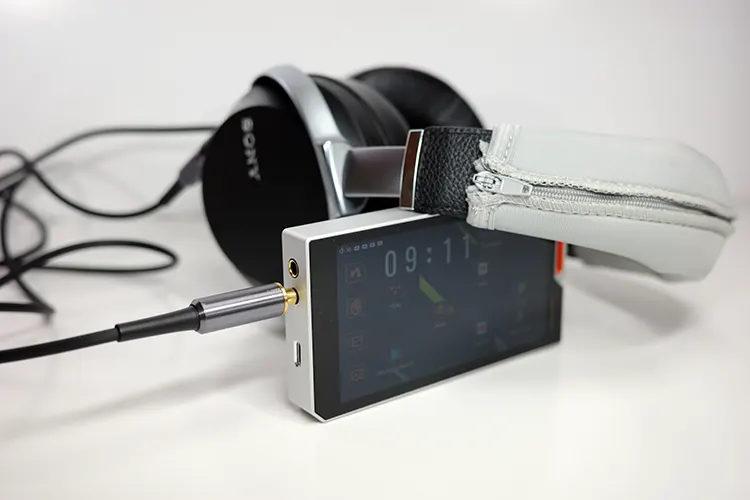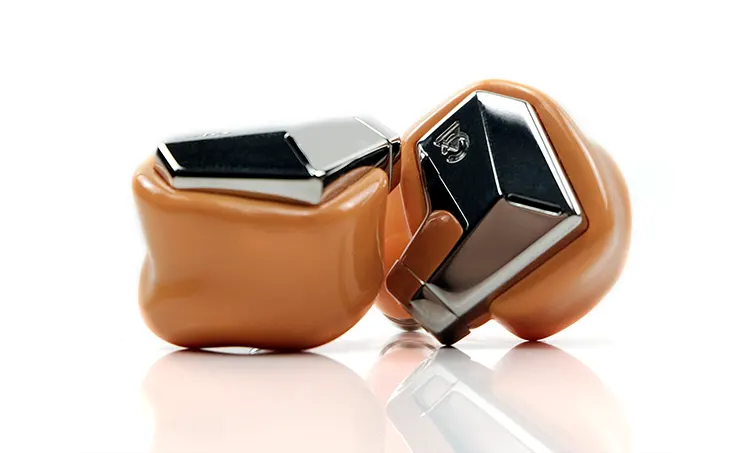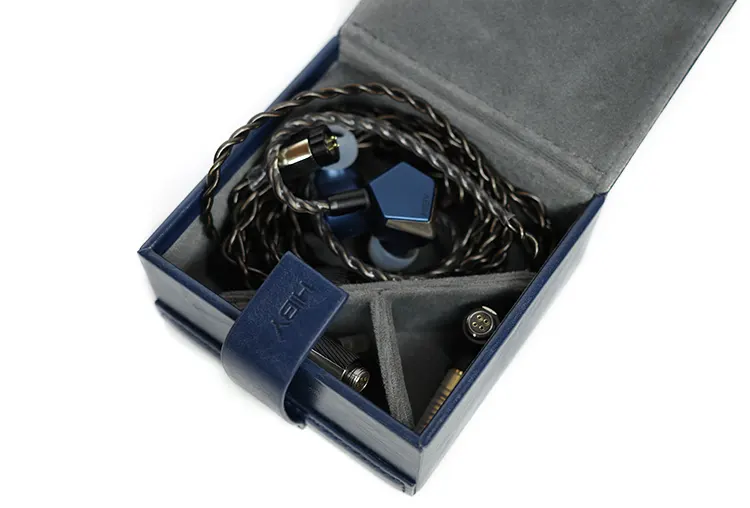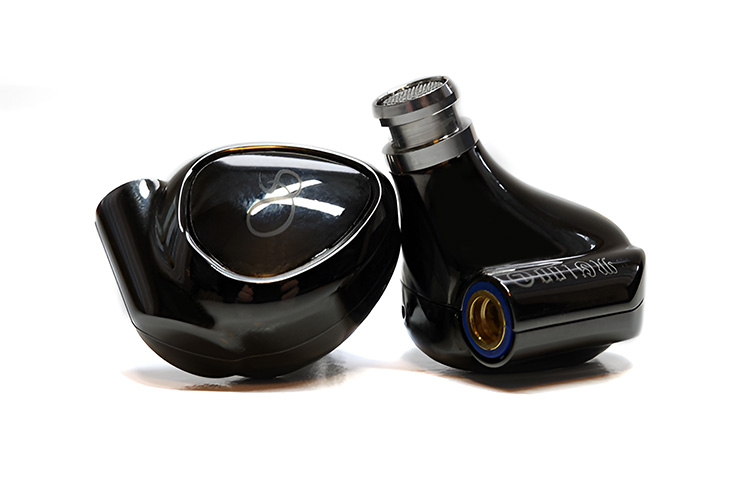Sound Impressions
The following sound impressions were made with the included HiBy Project ACE IEM, Sony’s MDR-Z7 G1 headphones, B&W Pi7 V2 TWS earbuds, and Shanling MG100 IEM.
Summary
Coming across as neutral is a good thing here. When one hears that a DAP is “neutral” or “flat” that means there is no coloration to the sound unless the user personalizes the tuning. The same holds here.
Using “budgetary” equipment to keep the cost reasonable can sometimes mean there are discrepancies that fault the sound. Not so here. Notes are consistent without any peakiness sometimes associated with the tuning of certain budget-minded parts.
The bass is clean and not bloated, presenting a thoroughly engaging signature from the lows to the highs. Sabre DACs tend to be smoother in sound, so this fits the bill.
Moving up the scale, there is a slight push in the trebles, which can come down to the DAC again, but not bothersome to me in the least. The brighter character is portrayed as vibrant and energetic, seemingly antithetical to some budgetary DAP devices, which promote splash where accuracy should be the norm.
Paired with the included Project ACE IEM, the sound is engaging and accurate, but a bit flat compared to other IEMs and headphones I used here. Mind you, the pairing of the two is a very good setup for those who prefer an all-in-one solution.
Coloration
The coloring is not as ‘organic’, analog, or euphonic as other DAPs present themselves, but the accurate signature does portray itself as somewhat energetic and vibrant without becoming brittle or too bright.
The signature also carries good note weight without too much emphasis on a slower attack or decay of the notes (the speed at which the notes linger on either end).
Instead, the R4 presents the accuracy as texturally good without too much clarity or detail retrieval, which might be expected at this level (which can lead to an overly analytical sound coming forth).
The balance between vibrancy and accuracy of the detailed signature balanced a quality line here, without becoming harsh.
That balance of sound can sound a bit thin on lighter instrumented music such as classical, but only a bit. Where the accuracy is good, the note weight carries a bit thin with complex classical pieces.
Also, when running the high gain settings and louder volumes such as with the Sony MDR-Z7 G1, the sound became a bit untidy with too much grain hindering the overall quality, which detracted from the accuracy of the signature.
That said, when paired with the proper genre such as sax jazz, that grit gave a good representation of the music portraying an engaging signature, which I enjoyed.
The R4 is still a technically adept DAP, that also affords the user many possible paths for customizing the unit to their tastes.
Staging & Dynamics
Many have found that the R4 has good width and decent height, but only adequate depth. I would agree and this can hinder placing the instruments accurately and with the best precision.
The height allowed the music to stretch itself vertically a bit (within reason), which could be construed as thinning of notes, but the accuracy of presentation kept tight control of that.
What can help is the assortment of plugins offered including Joe Bloggs’ (from HiBy) Convolution, which helps with the expansion over a “non-EQ/Plugin” tuning. More on that below.
The less-than-black background does not seem to hinder the character of highly sensitive IEMs but does hinder the imaging and separation, which is noted in the lower level of precision in both.
The R4 is not meant to be the most precise, accurate sounding DAP, but what it does provide is a very good sound, that provides the listener with a host of customization options.
As stated elsewhere, this is one of the few times where I DID tinker with settings. Normally, I run stock settings, but here I felt the need to tailor the sound to my most preferred signature settings.
Plugins
Somewhat hidden away in the Audio settings menu is a section called Plugins which operates on a system-wide basis (including streaming platforms).
These are not regular digital filters that you might find with off-the-shelf DAC chipsets. These make substantive changes to much of the R4’s presentation.
Which plugin and which aspect will depend on the gear you are pairing the device to as well as your personal preference since some of the plugins have some in-depth layers of control.
There are 5 available plugins for the R4 and the three most transformative and useful plugins to me were Sound Field, Convolution (a newer one), and DRX10K Dynamics. It should be noted that many of these plugins come with a corresponding loss in “volume” level through a decrease in gain once activated.
By clicking on each Plugin, you can tailor each even further, modifying the “stock” settings including gain levels.
Sound Field
The Sound Field plugin shapes and extends the overall width of the soundstage and is excellent for IEMs that can deliver impressive staging depth. I found this aided in the average level of soundstage in the stock form.
The included Project ACE IEM especially benefitted from this plugin. Giving a holographic effect, the sound was elevated as well to me and could be construed as a harsher treatment by some.
Marcus found on the R8 II that if you set the plugin value too high it can mess with vocal presence, harden the upper mids and generally create too much hall-like reverb in the process.
The sweet spot for him was a supreme separation just a little to the right of the slider’s center. I found I liked it further to the right at 1.85.
DRX10K Dynamics
DRX10K Dynamics looks like a set of tone controls with additional gain functionality but what it does is tease out a desired level of dynamics in specific FR areas to counter perceived compression in recordings. It also lowers the volume level through + or – on the gain level.
You can control the bass presence, mids, and/or treble with individual sliders offering up to a potential 10 dB gain swing in 0.5 dB increments.
I agree with Marcus when he states, “The stock DRX10K Dynamics settings, (+0.7,0.0,+0.4,-6.0), were not ideal for my IEM choices. The gain was quite a bit reduced with the bass overpowering. It produced a very rounded dark tonal quality to the likes of the UM Multiverse Mentor.”
I found this to also be true on the Ace Project and Sony headphones. Consequently, I raised the gain level to -1.2dB to compensate.
When customizing too much, you have to be careful with lowering gain to prevent clipping during dynamic peaks in the tracks so I would suggest keeping it at least 3-4 dB below zero. I kept the settings as mostly standard, raising the treble slightly and the gain as mentioned.
There is always a trade-off with these applications in terms of the potential for reverb, attenuation, and staging quirks. Tailor the settings to your delight but be cognizant of the changes and potential negative effects.
However, the depth of the potential with its ability to be used in combination with other plugins such as Sound Field as well as MSEB produces a very intriguing level of sound customization.
Convolution
An interesting addition is also an additive Plugin. You can upload personal EQ settings, which are then treated through the Convolution Plugin at certain “enhancement” levels from -20 to +20.
As I did not upload any personal files, I cannot say what enhancements this may provide, but word of mouth shows many have had positive results.
Synergy
Noise Floor
As mentioned above, the R4 does not have the blackest background, especially with sensitive IEMs. I found that the lack of black background all but disappeared when the music started, and also as mentioned helped with some musical genres.
Does this limit what IEMs you can use? Potentially and especially if you are sensitive to certain ranges, but with my ears, I did not find anything bothersome.
Challenging IEMs such as my custom Campfire Audio Supermoon presented little additional noise to the mix, and unless I was actively seeking it out I wouldn’t notice anything. Conversely, using the included Project Ace, the floor was mostly without bother.
Channel balance was spot on, with no deviations between the two when volume was low enough, like on some DAPs, that use a volume pot. Dedicated raising and lowering buttons certainly helped.
Power
Harder-to-drive headphones do need the high gain settings, and even though I could use my 600Ω AKG 240DF, it was not the best presentation and required enough juice where I would not consider using the pairing.
For everything else, including the paired Project ACE IEM, the 525mW on the 4.4mm balanced jack was sufficient for loud to extremely loud listening purposes.
HiBy x f.audio Project ACE Pairing
When you purchase the R4 in a package deal you get the HiBy x f.audio Project ACE, a collaborative effort. You get a 12mm beryllium-plated magnesium alloy dynamic driver, which is easy to drive at 32Ω and with an impedance of 115 dB at 1kHz.
Having previously reviewed the flagship FAudio Dark Sky we came away impressed and with high expectations for the collaboration.
Design
The build quality is excellent, with a pentagonal-shaped lighter blue and chrome-accented T6063-grade aluminum alloy shell, and a longer nozzle, which may make a good fit difficult to achieve for some.
The shape did hinder my overall comfort. I tested the combination for over 50 hours before making any sound assertions.
Cable
Combined with a host of accessories, including both silicone and foam tips in various sizes, you also get an 8-core cable made of shielded coaxial copper and silver (type 5 Litz) that is stiffer and lays harder than some I have used.
The cable features a modular plug system, with a 4-pin connector and lock mechanism to keep the two sections from coming apart.
You do need to line up the silver plates on the cable and jack to ensure proper sound is coming out. I did find myself checking the connection quite regularly as the locking ring would slowly work its way loose.
All the accessories are packed inside a square pleather case with a magnetic strap, which affords plenty of space inside for both cable and IEMs. Larger yes, but a nice case, nonetheless.
Pairing Impressions
The ACE borders on the cooler, more analytical side of the spectrum, but with an impressive bass punch down low. The reach into the sub-bass is laudable but carries over into the lower mids helping to smooth the sound a bit from that more analytical aspect.
But there is no hiding the lack of warmth in the midrange. While the signature is on the colder side, I did find it several steps above the more budget-minded offerings from other manufacturers who carry similar tuning.
Nonetheless, I did have to temper my expectations for an accurate presentation of the sound, even if there was a speedy attack and decay to the notes.
That speediness in character helped make the overall signature thinner with less weight to the presentation than I would have preferred.
Conversely, though, there is clean, crisp detail from both male and female vocals (and plucky instruments such as trumpet or piano works), and an open-sounding midrange. This does help spread the soundstage out a bit complimenting the R4’s good width.
I found treble peaks at 6KHz and 8KHz, like others note, which rise, then drop stinting what would be frequencies that give an “open & airy” note to the presentation. There is a good amount of sparkle for those who favor treble, giving crisp vocal treatment (and the aforementioned instruments), but I would have preferred less peakiness.
Technically speaking, the Project ACE is quite good and does make for a very good combination with the R4. Technically proficient with crisp, clear details, but do not expect it to provide you with laidback texture.
This is an excellent combination for those who favor vocals, but when listening to more laidback genres such as traditional jazz, I found the lack of warmth missed it for me.
Other IEM Pairings
The Shanling MG100 has quickly become one of my favored IEMs at an affordable price. Most likely one step below the Project ACE, but still competitive.
I found the upper end of the midrange into the lower treble carried better note weight, and a bit less sparkle than the ACE. This led to a less punctuating shimmer to the sound, which favored my listening to jazz with the R4.
Not as detailed nor crisp as the ACE, but with a tad better control down low, the MG100 makes for a good companion if you prefer something a bit less analytical. Where the ACE will grab you with its precise detail retrieval, the MG100 engulfs you with an engaging smoother character.
TWS Pairings
The B&W Pi7 V2 TWS earbuds follow the successful Pi series, with better ANC and battery life along with a mild tuning upgrade. I found the combination with the R4 was seamless, and you can easily control the Pi7 V2 from a downloadable B&W app (I did not though).
Unlike some of the TWS items I tried, the B&W quickly connected and I was able to listen within 30 seconds once paired.
Bass hits fairly hard, but not like the two IEMs above. Nonetheless, the midrange of B&W TWS earbuds has always been the cat’s meow to me. The Pi7 V2 may not carry the technical prowess of its big brother the Px8 headphone, but it is still a worthy performer.
Paired with the R4, I did have to raise the volume markedly to achieve the same seat-of-the-pants feel as the IEMs above.
Thankfully, there was no treble sparkle peakiness to the duo, and I found the two quite a good pairing. This shows that the R4 pairs well with TWS buds as well.
Headphone Pairings
The Sony’s MDR-Z7 G1 was by far my favorite pairing with the R4. I have done the inner cup gauze “fix” to tame the booming bass, with good effect.
I found the pairing was similar to the Pi7 V2’s presentation but with a bit grittier texture. Not overly unkempt mind you, but laidback with an energetic bass & midrange, which found me reaching to raise the volume level quite often.
Running the pair on High Gain, I did lose some of the technical prowess, replaced by a somewhat gritty texture, but this played right into the genres of choice, such as saxophone-laden jazz music.
There was a small club-style sound to the pairing, which had me tapping my feet to the music while nodding approvingly.
The R4, combined with quality headphones that do not promote themselves as too technically full of prowess paired well, showing the diversity of engaging signatures that can happen.







